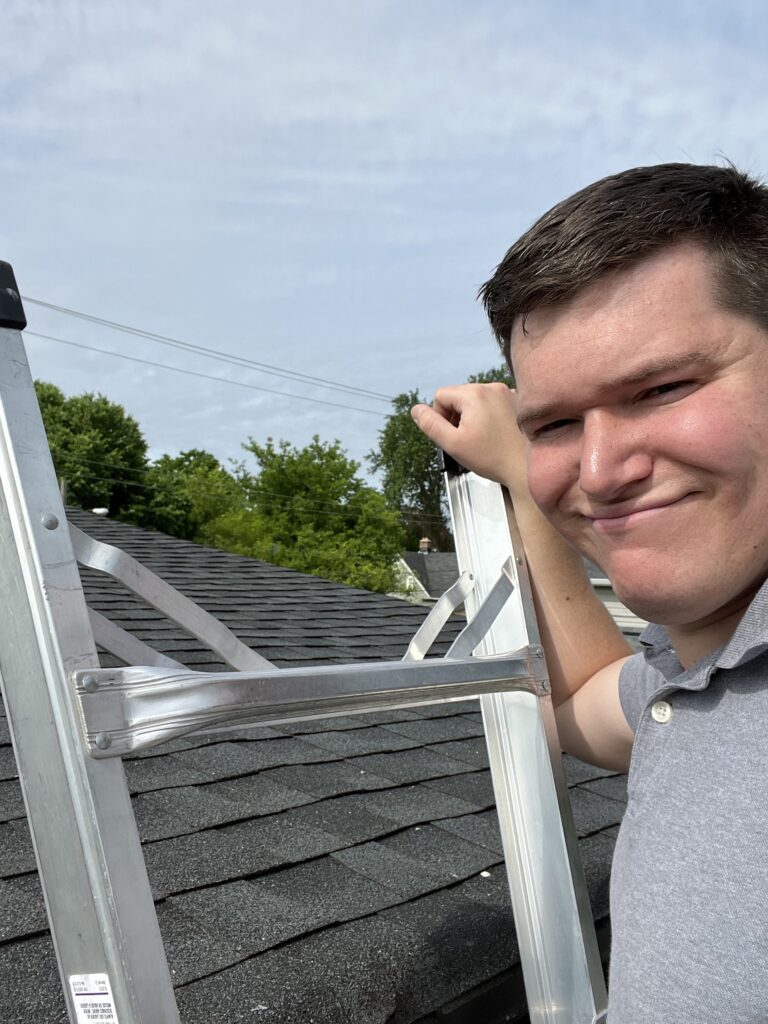When it comes to home inspections, one of the most critical aspects is assessing the condition of the roof. A thorough roof inspection is essential for uncovering potential issues and ensuring the safety and longevity of your home. In this blog post, we’ll explore why it’s important for a home inspector to get on the roof when possible, as well as the significance of using a drone when parts or all of the roof are not easily accessible.
The Importance of Getting on the Roof
- Visual Inspection: Climbing onto the roof allows a home inspector to perform a close-up visual examination of the roofing materials, flashings, and other components. This hands-on approach enables them to identify signs of damage, wear and tear, or inadequate installations that might not be visible from the ground.
- Accurate Assessment: A physical inspection of the roof provides a more accurate assessment of its condition. The inspector can walk on the surface, test for soft spots, and examine the integrity of shingles or roofing material. This can help uncover issues such as loose shingles, missing fasteners, or damaged flashing.
- Identifying Leaks: Leaks can be particularly elusive when inspecting from the ground. By being on the roof, an inspector can pinpoint potential sources of leaks, such as damaged or improperly sealed areas around roof penetrations like vents, chimneys, or skylights.
The Importance of Using a Drone
- Safety Concerns: Not all roofs are safe to walk on, and some may have steep pitches or fragile materials that pose a danger to inspectors. Using a drone eliminates the risk of accidents and injuries associated with climbing onto precarious roofs.
- Inaccessibility: Some roofs, especially those with complex or high-pitched designs, may be entirely inaccessible by foot. Drones provide a way to inspect these areas without the need for expensive scaffolding or risking damage to the roof.
- Comprehensive Inspection: Drones equipped with high-resolution cameras can capture detailed images and videos of the entire roof surface, including areas that would be difficult or impossible to reach otherwise. This comprehensive inspection ensures that no potential issues are overlooked.
- Time Efficiency: Drone inspections are often quicker than physically climbing onto the roof. This can save both time and money during the inspection process, allowing for a more efficient evaluation of the property.
Combining Both Methods for Optimal Results
The ideal approach to roof inspections is a combination of physical assessment and drone technology. This dual strategy allows home inspectors to leverage their expertise in examining accessible areas while using drones to cover inaccessible or unsafe portions of the roof. By doing so, they can provide clients with a comprehensive evaluation of the roof’s condition, ensuring that no potential issues go unnoticed.
Conclusion
A thorough roof inspection is a crucial part of the home-buying process, as it helps identify potential problems and provides valuable information for negotiation and future maintenance. While getting on the roof is essential for a hands-on examination, using drones when parts or all of the roof are inaccessible enhances safety, efficiency, and the comprehensiveness of the inspection. Choosing a home inspector who employs both methods ensures that you receive the most accurate assessment of your prospective home’s roof condition, allowing you to make an informed decision.

